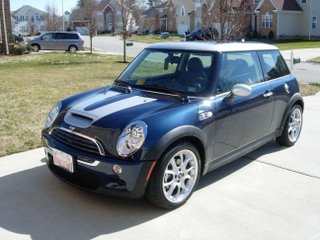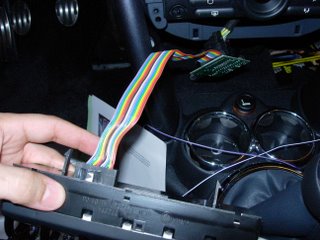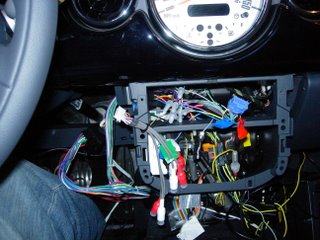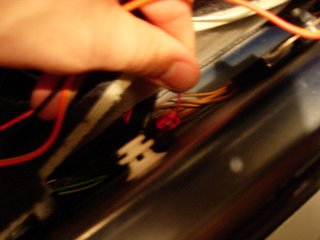
Now that you have Ian's adaptor installed you can button the center console and dash back up.
I bought a Parrot Bluetooth adaptor from Mikey the MINI so that I could use it with a Parrot Evolution 3000 hands free kit and the phone buttons on my steering wheel.
Seeing as how MINI of Sterling wanted to charge me two grand for a similar setup, I think spending $300 on parts for this little convenience is a bargain.
There is not much to the hands free kit install.
I mounted the blue Parrot "brain" unit in the side of the dash on the driver's side. There is a panel on the end of the dash that you can access when the door is open. Use a panel remover tool to pop it open.
I used some Industrial Velcro and carpet foam to make a snug, rattle-free fit for the gadget in the little space. Once you have wedged the blue box in the dash, you should only have one wire coming out of the side of the dash (the hands-free kit's mic).

I mounted my mic with the included mount and 3M tape in the driver side A-pillar, making sure to tuck the wire behind the pillar.
I decided to install the Euro Parcel Shelf that comes stock on European-spec MINIs in place of the lame, stock knee bolster.
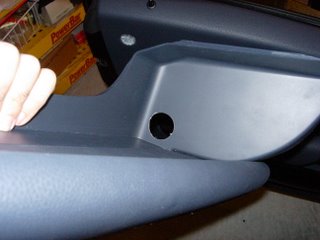
The knee bolster is really easy to install. Simply line up the grooves on it's base and ram it into place. It takes about ten seconds (well, for me it took two minutes -- I drilled a hole in the side of it so my iPod adaptor wire could fit through easily).
That's it!
I learned a lot about my car and it's construction after going through this mod. I have to admit, I was nervous about tearing open my first brand new car, but my anxiety was alleviated as the project progressed.
If there is one piece of advice I can give to other first-time installers like myself, it is:
"Take your time and you will do a bang-up job."
